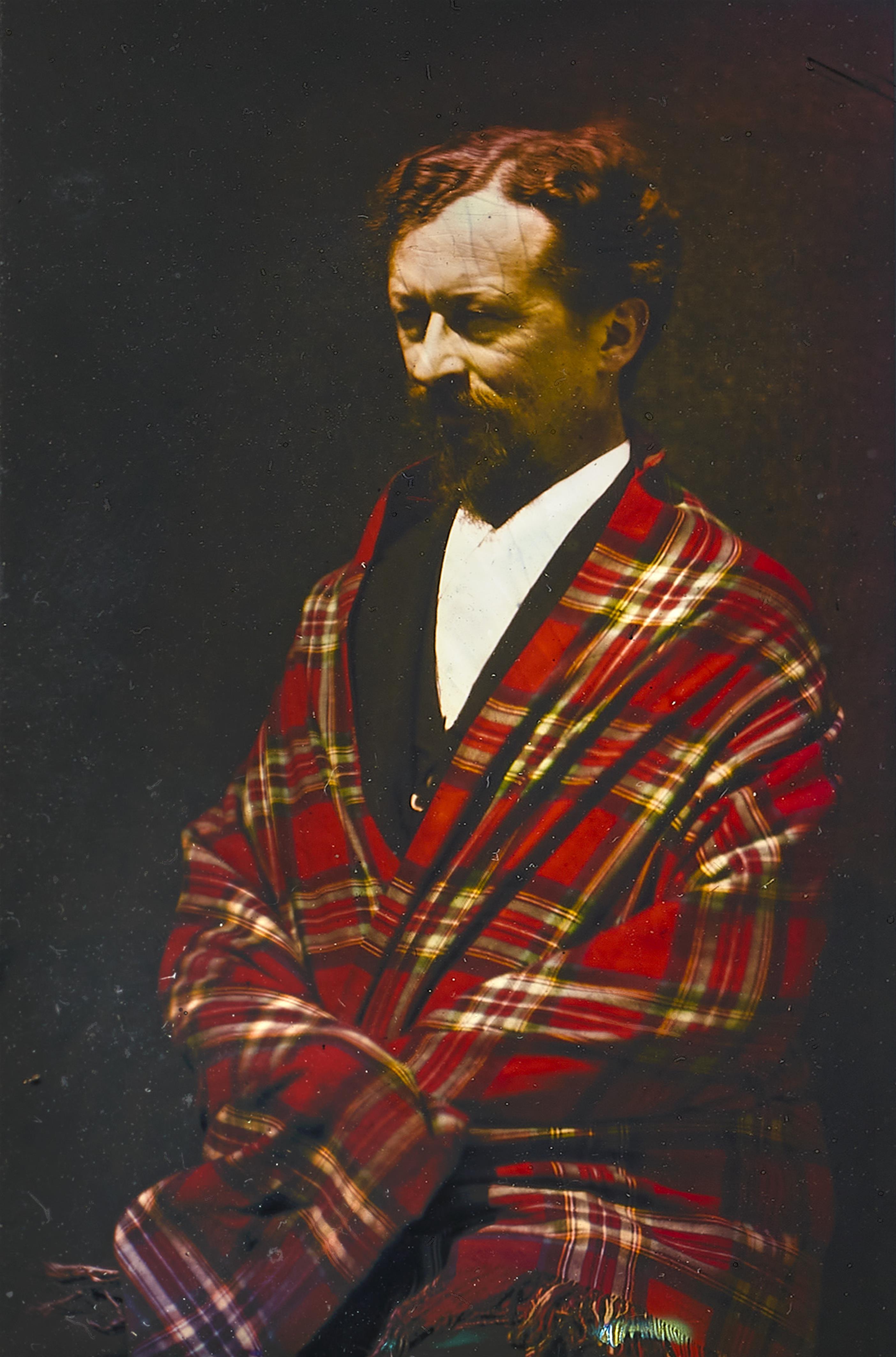Dr. Richard Neuhauss
Self portrait
1901
Interferential photograph (Lippmann process). 6.9 x 4.7 cm (8.5 x 6.3 x 1.9 cm).. Signed, dated, titled and inscribed "Lippmann's Verfahren" in ink on the verso.
Supplement:
Anonymous
Stufenfarbentafel (Agfa), not dated
Interferential color photography (Lippmann process)
6.7 x 8 x 1.5 cm
The object at hand is an early color photograph produced using the so-called Lippmann process. Its inventor Gabriel Lippmann (1845-1921), a physicist and mathematician from Luxemburg and professor at the Sorbonne in Paris, was awarded the Nobel Prize in Physics in 1908 for his innovative heliochromatic process based on interference, which he first presented at the Académie des Sciences in Paris in 1891.
Shortly after its announcement, Lippmann's invention spread beyond the country's borders. Other photographers also experimented with his unpatented process. Between 1894 and 1900, competitions were organized by the 'Société française de photographie' to "promote the dissemination of Lippmann's method" alongside other methods. Notable admirers of the Lippmann method included the Frenchmen Louis and Auguste Lumière as well as the German physician and anthropologist Dr. Richard Neuhauss, who recognized the advantages of colour photography for his work early on. Having already visited Southern Europe, North Africa and Northern Europe as far as the North Cape during his studies, he undertook a research trip to the Pacific region in 1884 to collect anthropological material. Alongside anthropology, his second great passion was photography. Between 1894 and 1907, he was editor of the "Photographische Rundschau" and had been experimenting with the Lippmann process since 1895. In 1898, he wrote a 70-page treatise with detailed technical instructions for the production of Lippmann photographs, in the preface to which he writes: "Among the processes for the production of colored photographic images, that of G. Lippmann is so far the only one that rightly deserves the name ‚color photography‘." [Dr. med. R. Neuhauss, Die Farbenphotographie nach Lippmann's Verfahren. Neue Untersuchungen und Ergebnisse (Encyklopädie der Photographie, issue 33), Halle Saale 1898]. As can be seen from his laboratory notes, Neuhauss produced over 2500 Lippmann photographs, mainly of inanimate objects.
An interferential color photograph is a unique, non-reproducible photograph and is characterized by maximum color brilliance, which, however, can only be perceived from a certain angle. It consists of an approximately 2 mm thick glass plate coated with a silver emulsion as an optical image carrier, the reverse side of which is coated with black lacquer. A glass prism is glued to the coated side of the glass plate. To facilitate handling and protect the image, the edges are sealed with strips of black adhesive paper. Recording a light wave on a Lippmann plate is comparable to recording a sound wave on a record. In both cases, the oscillation (light or sound) leaves its imprint in a substance. In interferential color photography (Lippmann process), the beam of white light directed at a suitable angle onto this imprint enables the eye to perceive any color that corresponds to the recorded wavelength. To date, the Lippmann process is the only photographic process that captures all the colors of the spectrum instead of splitting them into three colors. However, due to the complexity of production, the long exposure time of 5-10 minutes, the high costs (due to the use of mercury) and the limited usability due to the narrow viewing angle, it was not able to establish itself in the long term and was replaced by other methods.
In this photograph, Richard Neuhauss presents himself in the pose of a self-confident scholar at the height of his scientific career in a private setting in a housecoat, the colorful pattern of which is particularly suitable for demonstrating the process. A second version of the same motif is on permanent loan from the Higher Federal Teaching and Research Institute of Graphic Arts at the Albertina in Vienna.
This object is of great importance not only because of the uniqueness of the motif, but above all because of its relevance to the history of science.
We would like to thank Manuel Sigrist, Photo Elysée Lausanne, for valuable information.
Provenance
Private property, Northern Germany










